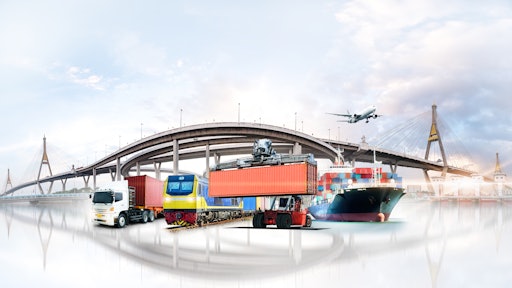
enanuchit/stock.adobe.com
Every planning season comes with uncertainties, but setting strategies for 2025 feels particularly complex. Shippers must account for a confluence of factors, including an anticipated freight market contraction and a presidential election sure to have both immediate and long-term impacts on regulatory policy and the economy. Meanwhile, continued AI acceleration has many shippers fearing they’ll fall behind if they don’t integrate the latest tools ASAP.
Despite all the noise, one thing remains clear: staying ahead in 2025 will require a combination of meaningful relationships, unbiased, data-driven insights, and a commitment to playing the long game. Here’s a look at the top challenges to come — and the strategies you’ll need to factor into your transportation roadmap to navigate them effectively.
Challenge 1: Preparing for a freight market flip. In the current soft freight market, shippers are enjoying the ease that comes from plenty of available capacity and favorable rates. Aside from a few regional pockets where carrier closures have left capacity scarce, shippers have held the upper hand in negotiations for the majority of the year. But the tide may soon change.
Breakthrough’s economic research indicates a market contraction is likely to occur in late Q1 or early Q2 2025 as shippers return to seasonal inventory trends and consumer goods spending increases. Some shippers may choose to put additional price pressure on carriers through the end of the year to save as much as possible in anticipation of the price hikes to come, but it’s a shortsighted strategy that only weakens partnerships.
Tactic for resilience: Nurture carrier relationships now. The soft freight market puts shippers in a prime position to invest in critical relationships with carriers. Take a moment to quantify what a strategic carrier relationship means for your organization and set KPIs for success. Then identify current gaps and at-risk relationships and regions so you can shore up your network while capacity remains abundant. Consider when it may be strategic to pay a slight premium to solidify a relationship during the soft market, so you’ll be in a strong position when the market contracts.
Challenge 2: Navigating regulatory shifts. With the presidential election approaching, shippers are closely monitoring potential regulatory shifts. Whichever party takes the White House, the transportation sector is likely to face a mix of regulation and deregulation on energy policy and equipment manufacturing (e.g., fuel efficiency standards for new heavy-duty trucks) that could influence how shippers set strategies and budgets.
Tactic for resilience: Level up your industry intelligence. Access to trusted, transportation-specific market insights will help you anticipate changes and adjust strategies as new regulations emerge. With a clearer understanding of how your current transportation network aligns with larger industry trends or shifts in the market, you can make more informed and proactive decisions.
Challenge 3: Blocking out industry “noise”. Transportation teams are constantly bombarded with new technologies — and generative AI and LLMs are at the top of the list. With chatter about AI-powered solutions continuing to dominate industry conversations, it can be easy to believe your team is behind the adoption curve, when in reality, most pilot programs are focused on specific, limited applications.
Tactic for resilience: Stay the course. Continue to evaluate and test emerging technologies like AI and LLMs, but don’t divert resources away from proven solutions that deliver real value today. True agility requires having tools and technology that enable you to identify opportunities to optimize your network in real time, while tracking progress toward critical objectives.
Challenge 4: Remaining calm amid market volatility. Economic and market news can be another source of distraction. While it’s important to stay informed about market changes, fluctuations in everything from fuel prices and anticipated trade tariffs to labor market reports can tempt transportation teams to quickly shift focus. This can lead to rushed decisions and a reactive approach that’s overly focused on short-term changes at the expense of a long-term strategy.
Tactic for resilience: Build a solid data foundation. Assembling granular data from across your transportation network gives you a clear picture of every lane. When combined with trusted market insights, this enables you to anticipate potential disruptions and respond proactively.
Stay resilient and agile no matter what 2025 brings. The challenges we’ve discussed are top of mind now, but additional disruptions are inevitable as the year progresses. Something will go wrong, whether it’s cargo theft, an unexpected weather event, or a carrier falling short of expectations. The key to staying ahead is ensuring you have the tools, technologies, and partnerships that allow you to pivot quickly when the unexpected happens.
With a solid foundation of data, technology and strategic partnerships, you can respond rapidly, adjust your plans and keep operations running smoothly while maintaining focus on your long-term goals. Now is the time to assess your readiness and build a network of resources that ensures your organization can face the unpredictable with confidence and resilience.







